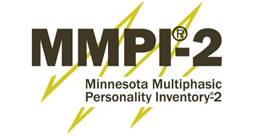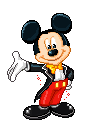



















Note: These questions are part of a larger data base of questions & are selected to represent the type of question you should expect on unit exams. Exam questions, however, may deal with topics not covered in the practice tests or in lectures but are discussed in your textbook. You are responsible for the content of your text book plus the content of lectures, interactive activities, & material on the web site.Use these sample questions to test yourself & to practice for the test. Click on your choice to see if you are right.1. If you are describing characteristics of your child such as irritability or adaptability, psychologists would say you are not describing their personality but rather their
• character.
|
2. According to Freud, the __________ works off of the pleasure principle while the __________ is often perceived as the executive director of your personality.
• id; ego
|
|
3. You are shocked to hear that two of your coworkers who seemingly hated one another are now getting married. According to Freud, what defense mechanism best explains their prior behavior?
• projection
• reaction formation
• repression
• regression
4. Four-year old Brandon has watched his father as he has mowed the lawn. This year, Brandon has asked for a lawn mower of his own for his birthday. Freud would say that Brandon is beginning the process of __________ as a way of resolving his Oedipal conflict.
• compensation
• identification
• sublimation
• denial
5. Your professor explains how all females have an inner masculine side that adds to their personality. This concept is known as a(n)
• anima.
• animus.
• shadow.
• source trait.
6. According to Adler, firstborn children with younger siblings tend to be
• overachieving.
• competitive.
• pampered.
• filled with feelings of inferiority.
7. Karen Horney's study of the personality focused on
• anxiety during childhood.
• biological changes during adolescence.
• trait-based characteristic that were present in infancy.
• environmental influences through adulthood.
8. Candice believes that fate will help her find the right man with whom to live her life. According to Rotter, she has a(an)
• external locus of control.
• internal lotus of control.
• strong self-efficacy.
• perceived sense of control.
9. Keisha works hard at her job because it will increase her chances for a promotion. According to Julian Rotter's theory her effort is an example of what he calls
• reinforcement value.
• expectancy.
• archetypes.
• latency stage.
10. What is a primary advantage of the social cognitive view of personality over the psychodynamic view?
• The social cognitive view tries to explain how people become the people they are.
• The social cognitive view stresses the importance of early childhood in
personality development.
• The social cognitive view is fully able to explain all the complexities of
human behavior.
• The social cognitive view has concepts that can be tested scientifically.
11. Which perspective of psychology focuses on the role of
each person's conscious
life experience and choices in personality development?
• trait
• behavior
• humanistic
• psychodynamic
12. An old motto of the U.S. Army was, "Be all you can be." This concept fits well
with Carl Rogers's theory of
• unconditional positive regard.
• empathy.
• self-actualizing tendency.
• real versus the ideal self.
13. According to Rogers, a mismatch between the real and ideal self
• typically motivates individuals to close the gap.
• can result in anxiety and neurotic behavior.
• causes one to beter understand their unconscious motives.
• causes an increase in unconditional positive regard.
14. Dr. Hill is constantly late for meetings. She often arrives at her classes 5-10 minutes late and leaves student waiting at her door during office hours for up to 30 minutes. Using the five-factor model which dimension would show a very low score for Dr. Hill?
• self-sufficiency
• openness
• agreeableness
• conscientiousness
15. To explain an individual's personality, trait theorists would look to
• early childhood emotional traumas.
• the kind of love, warmth, and affection given to the person by his or her parents.
• the early experiences of rewards and punishments for certain behavior.
• the constellation of personality characteristics possessed by the person.
16. Studies of the hereditability of personality traits found
• little evidence to support the belief that personality can be passed by genetics.
• evidence to support the belief that personality can be passed by genetics but only
in highly developed counties.
• strong evidence to support some personality traits can be passed by genetics.
• strong evidence that personality is passed exclusively by genetics.
17. As examples of what might be required as parts of specific projective tests,
the __________ asks clients to look at a picture and tell a story while the
__________ asks clients to report everything they see in an ambiguous figure.
• Rorschach; Thematic Apperception Test
• MMPI; Thematic Apperception Test
• MMPI; NEO-PI-R
• Thematic Apperception Test; Rorschach
18. Which type of assessment would be the most reliable?
• subjective test
• projective test
• personality inventory
• observational study
19. The __________ is based on the five-factor model while __________ is based
on the work of Raymond Cattell.
• NEO-PI-R; 16PF
• MBTI; NEO-PI-R
• MMPI-2; MBTI
• 16PF; MMPI-2
20. Personality neuroscience is an emerging field offering evidence of a possible relationship between the various aspects of personality with
• brain structure and function.
• the structure and function of individual neurons.
• skull shape and size.
• neuroticism.
21. What is the MMPI-2?
• An objective personality test
|
|
22. According to Freud, during what stage does the superego emerge?
• Genital
• Oral
• Phallic
• Anal
23. Attributing one’s own unacceptable thoughts or feelings to someone else is called what?
• Reaction formation
• Projection
• Displacement
• Sublimation
24. What is the part of the personality that compels people to act in perfect accordance with moral ideals?
• The id
• The superego
• The pleasure principle
• The reality principle
25. Which theorist focused on the importance of the self-concept in personality?
• Carl Rogers
|
|
26. Which one of the following statements about humanistic theories is false?
• They do not provide insight into the evil side of human nature
|
|
27. Studies of temperament provide evidence for which of the following?
• The concept of congruence
• Maslow’s concept of the self-actualizing person
• Sublimation
• Genetic contributions to personality
28. When he was young, Greg’s father was consistently promoted at work for his diligence. Greg saw this and learned to be a conscientious worker himself. This fact could most easily provide evidence for whose theory of personality?
• Sigmund Freud
• Albert Bandura
• Abraham Maslow
• Hans Eysenck
29. What is an advantage of projective personality tests?
• Different people would score them the same way
• They are very reliable
• They are not transparent to the subject
• They have lie scales that indicate whether subjects are being deceptive
30. Which of Jung’s beliefs differed from Freud’s theories?
• Everyone has a collective unconscious
|
|
• Go to the print friendly version of this practice test.
|
General Psychology Robert C. Gates 
|
|




